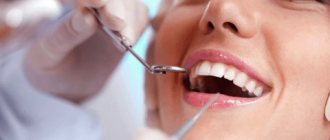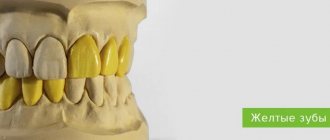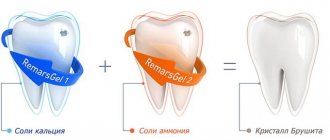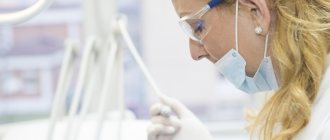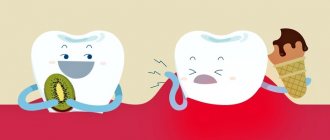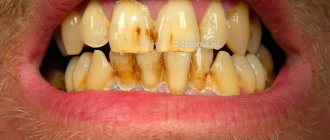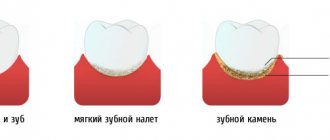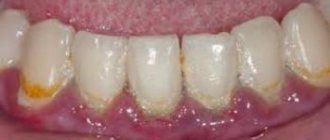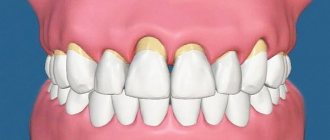The question of how to remove plaque from teeth and between crowns at home remains relevant for everyone who wants to have a snow-white smile and fresh breath. Despite the fact that deposits usually do not cause any discomfort to a person, it is imperative to get rid of the problem. Otherwise, the risk of developing caries, gingivitis and other oral diseases increases.
The patient can resort to professional help or use traditional methods. Which option is optimal in a particular case is best decided together with your doctor. The problem cannot be ignored, since scientists have long proven the existence of a direct dependence of the condition of incisors, canines, and molars on the quality of hygienic care.
What is dental plaque, how does it happen?
Food particles, dead cells, saliva components accumulate on the enamel every day, and bacteria appear. At first, the buildup is soft and easy to clean off. In the absence of regular hygienic care, the layer hardens and turns into stone.
As a rule, several units are affected at once. The surface acquires various unnatural shades (yellow, gray, black, greenish) and becomes rough to the touch. Your mouth begins to smell unpleasant.
The most common occurrence is supragingival deposits. They are located on the visible part of the crown. Subgingival teeth are not visible to the naked eye and go under the gum (sometimes reaching the very tips of the roots). This problem can be localized on the enamel, adjacent to the gingival tissues in the interdental spaces, fissures, and on filling materials.
How is it formed
Before you clean plaque and remove all excess from your teeth at home, you need to understand how it appears and spreads. This process occurs under the influence of the following factors:
- poor oral hygiene;
- a predominant amount of soft food and “fast” carbohydrates in the diet (confectionery, sugar, baked goods);
- lack of saliva.
A healthy person secretes enough secretion to wash away any leftover food. However, if the products are sticky, sugary, viscous, then they are not washed out naturally. Many people neglect to rinse their mouths after lunch or snacks, and as a result, a thin whitish layer appears on the enamel in which microorganisms actively multiply.
In less than a day, there are so many microbes that their metabolic products begin to affect the enamel structure. In the absence of high-quality cleaning, the accumulated mass hardens within 48 hours. The stone can no longer be removed on its own; a person will have to seek professional help from a dentist.
Causes of deposits
Complete and final removal of soft plaque on teeth at home is impossible without establishing the prerequisites that contributed to its occurrence. The most common provoking factors:
- Poor hygiene care. This includes irregular brushing, using a low-quality or inappropriate brush, and not using floss, which effectively cleans the interdental spaces.
- Consumption of “fast” carbohydrates with foods and drinks (for example, sweet soda).
- The diet constantly contains coloring foods (coffee, tea, berries, red wine, sauces).
- Bad habits (smoking, alcohol abuse). At the same time, it is not so important whether a person smokes cigarettes or vape or hookah.
- Bite abnormalities. The pressure on the jaw with such disorders is distributed unevenly, so it is quite difficult to clean the units.
- Various disorders (acute and chronic). For example, pathologies of the salivary glands (less minerals reach the bone tissues), diseases of the gastrointestinal tract, and gastroesophageal reflux disease lead to the appearance of deposits. Due to increased acidity, the number of pathogenic bacteria quickly increases.
Comments
I had my teeth cleaned at the dentist for the first time in my life just a few months ago, and today I noticed that there was too much plaque again. How so??
Olga (02.09.2020 at 20:39) Reply to comment
- Dear Olga, the rate of plaque formation can be affected by the presence of chronic diseases, poor oral hygiene, smoking, consumption of “colored” foods and drinks, the presence of gingivitis and periodontitis. Sometimes the cause of the pathology is the unprofessionalism of the doctor, who poorly polished the surface of hard tissues at the final stage of cleaning. You should contact an experienced dental hygienist or dental therapist to understand the situation.
Editorial staff of the portal UltraSmile.ru (09/06/2020 at 09:15) Reply to comment
I have an “extended” tooth, but it has become darker than mine, the doctor explained that a change in color can occur over time. Is it possible, in addition to a crown, to achieve lightening of just such a tooth?
Mira (09.23.2020 at 07:15) Reply to comment
Tell me, if you have crowns in visible places and your own teeth, what is best to use for cleaning? That is, the listed products for home use are also suitable for cleaning crowns. Or is there something simpler for crowns, or vice versa more effective?
Inga (09.23.2020 at 09:00) Reply to comment
Tell me, which method of professional teeth cleaning is the safest and most gentle? And what is the most correct and effective method of home cleaning? I'm afraid of ruining the enamel.
Elena (09/23/2020 at 11:57 am) Reply to comment
We were surprised about the banana peel! I knew about fruit acids. I have increased sensitivity of all my teeth, because my gums have risen, if I express myself correctly, that is, the necks of my teeth have become slightly open. Visually it’s not very noticeable, but there is a reaction to sweet/sour. In my case, there’s probably no way to whiten my teeth at all? Thank you.
Victoria (09/23/2020 at 12:32 pm) Reply to comment
Twice a year I do ultrasonic teeth cleaning. The dentist advised me to buy an electric ultrasonic toothbrush. But I heard that electric brushes destroy teeth. Is it worth buying?
Zlata (11/20/2020 at 6:10 pm) Reply to comment
Hello, can you tell me how often I can do water-abrasive cleaning? If six months have not yet passed since the last procedure, and I am still not satisfied with the cleanliness of my teeth, can I repeat the procedure, or will frequent use harm my teeth?
Irina (11/20/2020 at 6:59 pm) Reply to comment
Doesn’t all this cleaning harm the enamel and make the teeth, although plaque-free, sensitive? I'm afraid to even do regular brushing; I think I could damage my teeth or wear away the enamel.
Sveta (11/20/2020 at 07:41 pm) Reply to comment
I don't smoke, but I still have plaque. I drink a lot of coffee, so they are yellow. I used to brush with baking soda instead of tooth powder. Then they told me that I shouldn’t do this often because it could erase the enamel.
Anna (11/20/2020 at 08:29 pm) Reply to comment
A high-quality paste will help you and it’s expensive, and after one brushing I also clean it with tooth powder. Those. twice a morning, for example. Well, you also don’t need to overdo it with cleaning, so that you don’t have a dry mouth later.
Marina (11/20/2020 at 09:08 pm) Reply to comment
Write your comment Cancel reply
Why is dental plaque dangerous?
Soft and hard deposits seem harmless at first glance. They lead to serious problems such as:
- formation of stone on the outer and inner surfaces of the teeth, in the interdental spaces;
- inflammatory processes of mucous membranes, including gums;
- bad breath that does not go away even after rinsing and brushing;
- disruptions in the gastrointestinal tract.
Anything that accumulates on the enamel must be removed in a timely manner. Otherwise, negative consequences cannot be avoided.
Possible complications
Of course, with brown layers there is no need to talk about aesthetics. This is an important aspect, but not the main one. Deposits must be removed before they cause serious oral ailments. When the enamel turns black, an irreversible problem develops, such as gingival bleeding caused by plaque around the gums, or tartar, periodontitis or gingivitis, complete destruction of the enamel and increased sensitivity of the units. When the first signs of darkening appear, you should immediately consult a doctor. Do not ignore the disease, as it may indicate diseases of the internal organs.
In such a situation, the patient is referred for consultation to a gastroenterologist, endocrinologist or infectious disease specialist. After receiving information from specialists, the dentist develops a program to restore the color of the affected units and remove plaque between the teeth. If tuberculosis or diabetes mellitus, allergies or parasite infection, gallbladder dyskinesia or other serious ailments are diagnosed, the dentist begins work after treating them.
Dental removal techniques
These can be both primitive options and high-tech procedures. The choice of intervention method depends on the following factors:
- the patient's well-being;
- clinical picture (thickness, structure and density of the layer);
- age category;
- localization of formations.
It is acceptable to use several types in combination. They will serve as a supplement and speed up getting a positive result.
Ultrasound for removing solid deposits
How to remove plaque from teeth, from interdental spaces and other hard-to-reach places? The ultrasound method comes to the rescue. The waves crush the hardened layer, and then the broken off particles are washed away with water.
This method is suitable for cleaning both internal and external surfaces, areas between crowns. The structure of the incisors, canines and molars does not suffer from this procedure, however, if the patient has increased sensitivity, or there were too many layers, some discomfort may be felt for several days after visiting the dental office.
Laser removal
The laser beam removes the old stone absolutely painlessly by evaporating water into it. The tooth surface remains intact and is not damaged, the condition of the gums improves due to their tone. An additional advantage of the technique is its disinfecting (antibacterial) effect. There is also a drawback that may seem significant to some, but may not matter to others - it is high cost.
Manual removal
A classic option that has been used for decades. Hard deposits are torn off or scraped out with special devices - curette hooks.
This method in itself is traumatic, especially if the hardened layer has penetrated deep into the subgingival space. However, in some cases, this processing option is the only acceptable one due to certain contraindications and restrictions.
The patient may experience pain or other discomfort. To alleviate the condition, the doctor pre-treats the mucous membranes with a gel or anesthetic spray.
Chemical method
How will you clean your teeth from plaque in this case? The procedure can be used independently or in combination with others. More often, dentists choose the second option, and after chemical treatment they use laser, ultrasound or mechanical cleaning.
The essence of this technique is to apply a special gel-like composition with active ingredients (hydrochloric acid, hydrogen peroxide, etc.) to the surface of the enamel. A reaction occurs as a result of which the deposits are softened and washed away with water or removed manually using special tools.
Gentle Air-Flow sandblasting
Air-Flo is a method that is optimal in the presence of soft layers and a thin bacterial film. This way you cannot get rid of the hard stone.
During the procedure, the units are treated with a mixture of water, air, and special abrasives in powder form. The composition is supplied under a certain pressure.
Based on the results of medical manipulations, the overgrown layer is easily removed, without affecting the structure of the incisors, canines and molars, even if they are milk teeth. Patients who have chosen this technique note an undeniable advantage - the shade of the enamel becomes several tones lighter than before.
How to remove plaque at home
The effectiveness of traditional methods depends on the thickness and density of the accumulated layer. If the deposits have appeared recently and are moderately soft, it is enough to clean them in the usual way using a brush.
When yellowish or dark pigmentation appears on the enamel, harder bristles and products with abrasives (Lacalut White, Rembrandt “Anti-tobacco and coffee”, etc.) come to the rescue. However, such compositions should be used only after consulting a dentist and with his approval. By scratching the enamel, you can significantly worsen the condition of your incisors, canines and molars, causing caries and more serious oral diseases.
The patient should simultaneously receive answers to two questions from the doctor:
- how to clean your teeth from plaque at home so that it is quick, painless, but effective;
- what mixtures and solutions to use for safe cleansing without negative consequences.
Many patients use improvised components that have been highly effective for many years. One of the most popular is activated carbon. The tablets are crushed with a spoon or mortar to obtain fine-grained particles that remove deposits and polish the surface. A damp brush is dipped into the resulting powder, after which standard cleaning is performed for several minutes. After using the drug, you should rinse your mouth thoroughly with water. To prevent increased sensitivity, this method cannot be used more than 2-3 times a week.
Baking soda is also often used. The procedure is exactly the same as in the previous case. In the same way, it is indicated to use industrial tooth powder.
Essential oils (lemon, tea tree) are also highly effective. This is the safest home option since there is no exposure to abrasives. There are several ways to use these compounds:
- add 4 drops of oily liquid to a glass of warm water, rinse your mouth after your usual regular brushing;
- drop onto the brush before cleansing without paste.
But do not rush to use advice without recommendations from a dentist.
Clinical researches
Clinical studies have proven that regular use of professional toothpaste ASEPTA GENTLE WHITENING for a month allows you to lighten tooth enamel by 1.5 tones, increases anti-caries effectiveness by 3.4 times and increases enamel remineralization by 2.6 times.
Sources:
- Report on determining/confirming the preventive properties of toothpaste “ASEPTA PLUS” GENTLE WHITENING” Author: doctor-researcher A.A. Leontyev, head Department of Preventive Dentistry, Doctor of Medical Sciences, Professor S.B. Ulitovsky First St. Petersburg State Medical University named after. acad. I.P. Pavlova, Department of Preventive Dentistry
- Report on the determination/confirmation of the preventive properties of personal oral hygiene products “ASEPTA PLUS” Remineralization doctor-researcher A.A. Leontyev, head Department of Preventive Dentistry, Doctor of Medical Sciences, Professor S.B. Ulitovsky First St. Petersburg State Medical University named after. acad. I.P. Pavlova, Department of Preventive Dentistry
- Clinical studies of antisensitive toothpaste “Asepta Sensitive” (A.A. Leontyev, O.V. Kalinina, S.B. Ulitovsky) A.A. LEONTIEV, dentist O.V. KALININA, dentist S.B. ULITOVSKY, Doctor of Medical Sciences, Prof. Department of Therapeutic Dentistry, St. Petersburg State Medical University named after. acad. I.P. Pavlova
Features of plaque removal in children
Some dental techniques are contraindicated in childhood. This applies to ultrasound, laser, chemical treatment. Such caution is associated with a high risk of damage to tissues sensitive to external influences.
Air-Flow gentle cleaning allowed. It is suitable for children over 6 years old. Manual processing is also acceptable. The dentist must act extremely carefully. Any wrong movement and children's sensitive enamel may be damaged. In addition, almost every child is very active, and injury from dental instruments is possible due to negligence.
It is important for parents to monitor what their son or daughter eats and whether regular hygiene procedures are carried out properly. The diet should contain a minimum of sweets and baked goods; it is better to give preference to fresh seasonal vegetables and fruits.
How effective are traditional methods?
Some people don’t think about how to remove plaque from their teeth, remove it from their gums, and not harm themselves. In pursuit of a snow-white smile, methods are used, the use of which leads to more serious consequences. For example, many often turn to soda, salt, and activated carbon. All of these are abrasives. Dentists do not advise getting carried away with such cleansing options and carrying out the procedure frequently, since hard particles of different sizes scratch the enamel. As a result, it is gradually destroyed, the pathological process affects deeper layers, and caries occurs.
Traditional recipes show good results if the formations are soft. They cannot cope with stone: only a doctor can remove petrified structures.
Preventing deposits
Instead of thinking about how to get rid of plaque at home when you find it on your teeth, it is better to take care of following preventive recommendations. Preventive action:
- Regular oral hygiene. Systematic cleaning with paste and brush at least 2 times a day, morning and evening, is important.
- Using additional cleansers after meals and snacks throughout the day. These can be threads (floss), an irrigator, a rinse aid, or a special brush.
- Minimizing the consumption of tea, coffee and other coloring drinks and foods.
- Getting rid of bad habits, this especially applies to smoking.
- Introducing hard vegetables and fruits into the diet to naturally cleanse the enamel during chewing.
- Periodic examinations by a dentist (at least once every six months).
- Refusal of confectionery, baked goods, soda.
- Replace the brush every 2-3 months.
Several conclusions can be drawn about how to remove plaque: cleaning at home does not always show high effectiveness, especially if the deposits appeared a long time ago and have hardened. Professional procedures are effective and take place very quickly, but require additional time and financial costs.
To prevent such problems from occurring, it is necessary to adhere to the rules of prevention. First of all, high-quality oral hygiene is extremely important, in the absence of which colonies of pathogenic microorganisms will settle on hard and soft tissues in the mouth, whose vital activity leads to unpleasant consequences for the human body.
Cleansing methods
The soft layer of contamination on dental elements is an excellent breeding ground for pathogenic microflora. It multiplies exponentially, becoming a source of infection and, as a result, the cause of caries, gum problems and gastrointestinal diseases. Dentists have learned to effectively deal with the problem. Once upon a time, cleansing was carried out manually, it was not effective enough and was accompanied by pain. Now, special devices are used for cleaning, which allow 100% destruction of pathogenic flora. Experts recommend doing this procedure at least once a year.
The most popular method is cleansing using an Air Flow device. Mechanism of action: a solution containing tiny abrasive particles is applied to the surface of the enamel layer under pressure. They gently “bombard” plaque, destroying it and washing it away. Hard tartar is removed with an ultrasonic scaler. Once cleaning is complete, the enamel is polished and a fluoride varnish is applied to remineralize it.
Important: self-medication is dangerous. Do not try to remove dirt with sharp objects (needle, knife, etc.). This is fraught with injury to the gums, chips, and the risk of swallowing the cleaning tool.
